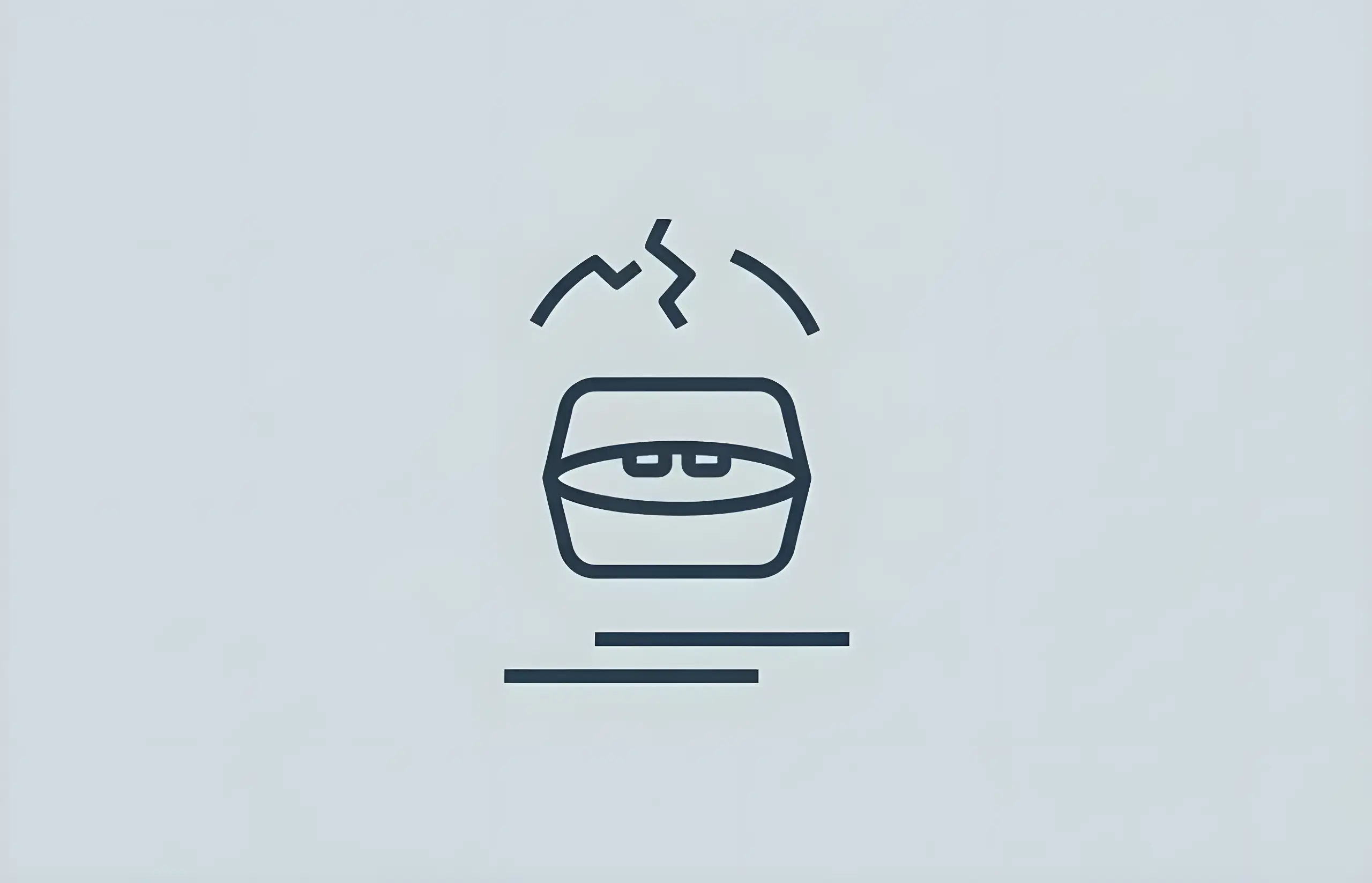Sometimes, you need to wear temporary veneers until you can get a permanent solution for your teeth. With that in mind, do temporary veneers look bad, and should you worry about getting them? Let's take a closer look at this dental option, supported by research evidence.
Research provides reassuring evidence about provisional restorations. A 2018 systematic review analyzing patient satisfaction with fixed dental prostheses found that patients rated aesthetics highly (median 90.3 on a 0-100 visual analogue scale), and importantly, the use of provisional restorations had no negative effect on patients' ratings of definitive restorations.
What Are Temp Veneers Made Of And How Do They Look?
Temporary veneers are usually made from one of two materials: PMMA (polymethyl methacrylate) acrylic resin or bis-acryl composite. Understanding these materials helps explain their appearance and performance.
PMMA Acrylic
PMMA is a transparent type of plastic widely used across various industries because it's lightweight, exceptionally durable, transparent, and resistant to chemicals. Even in the rare cases when it breaks, acrylic fractures into pieces with dull edges—an important safety consideration for something in your mouth.
PMMA resins offer advantages including being relatively inexpensive, ease of handling, excellent polish capability, and good marginal adaptation. However, they have drawbacks: exothermic polymerization (heat generation during setting), high polymerization shrinkage, and lower wear resistance compared to newer materials.
Bis-Acryl Composite
Bis-acryl materials represent an advancement over traditional PMMA. Research comparing these materials provides definitive evidence of bis-acryl's superiority.
A 2018 systematic review and meta-analysis found that bis-acryl demonstrated significantly higher flexural strength than PMMA by 18.4 MPa (95% CI 4.3-32.5). This means bis-acryl materials are substantially stronger and more resistant to fracture from chewing forces.
Bis-acryl composites are based on dimethacrylate monomers (such as Bis-GMA and UDMA) with inorganic fillers, providing:
- Higher flexural strength and hardness
- Superior dimensional stability
- Better aesthetic potential
- Low polymerization shrinkage
- Lower setting temperature for patient comfort
- Hydrophobic properties (unlike PMMA which absorbs water)
Studies show bis-acryl systems can achieve flexural strengths of 80-100 MPa, compared to PMMA at approximately 71 MPa when milled, making them significantly more durable for temporary use.
Aesthetic Appearance
So, do temporary veneers look bad? In most cases, no. Since these veneers are translucent, most people won't even notice you're wearing them. Modern provisional materials can be finished to a tooth-like appearance, though research notes they are "susceptible to alterations of the surface gloss and potential discoloration" over time.
However, temporary veneers may reveal large cracks or other damaged areas on your tooth's surface if these exist beneath. Rather than looking bad themselves, they may fail to completely mask underlying dental issues. This is an important distinction—the temporary veneers aren't unattractive, but they provide less coverage than permanent porcelain veneers.
Research on patient satisfaction confirms that provisional restorations achieve acceptable aesthetics. The 2018 systematic review found patients rated aesthetics of provisional restorations highly, with no significant impact on satisfaction with final restorations.
Why Might Temporary Veneers Be Necessary?
The main reason to wear a temporary veneer is to protect your tooth while a laboratory creates a permanent veneer. Most dentists cannot create custom-made permanent veneers on-site, and it could take 2-4 weeks for them to be made and delivered. If you need to protect your tooth in the meantime, temporary veneers are often the best choice.
Protection of Prepared Teeth
When your dentist prepares your tooth for a permanent veneer, they remove a thin layer of enamel (typically 0.3-0.7mm). This leaves the tooth temporarily vulnerable to:
- Temperature sensitivity (hot and cold)
- Physical trauma
- Bacterial contamination
- Aesthetic concerns
Temporary veneers protect the prepared tooth surface during the fabrication period for permanent restorations. Research emphasizes that "the amount of preserved enamel layer plays a paramount role in the survival and success rates of veneers," making protection of prepared teeth essential.
Aesthetic Function During Fabrication
A 2021 evidence-based review in the Journal of Adhesive Dentistry notes that fabrication of provisional restorations for porcelain veneers "can be a difficult and time-consuming procedure," yet it's essential for maintaining aesthetics while permanent veneers are being created.
In that sense, the question of whether or not temporary veneers look bad is less important than their protective function. Safety always comes first, and since these are temporary by nature (typically 2-4 weeks), even modest aesthetics should not be a significant issue.
Additional Benefits
Temporary veneers offer several advantages:
- Affordability: Significantly less expensive than permanent veneers
- Minimal preparation: Usually not requiring additional drilling beyond what's needed for permanent veneers
- Functional testing: Allow you to test tooth length, shape, and bite before permanent veneers are made
- Gum tissue adaptation: Give gums time to heal and adapt to the new tooth contours
Research shows that the use of provisional restorations has no negative effect on patients' final aesthetic ratings, supporting their role in the treatment process.
Clinical Performance of Temporary Veneers
Complications and Success Rates
A 2024 narrative literature review analyzing dental veneers from 1999-2024 provides important data on provisional restoration performance:
Debonding: Approximately 2% of provisional restorations experience debonding, making it relatively uncommon but possible. The review notes "debonding is considered the second most common failure mode after fracture."
Fracture: Fracture/chipping accounts for roughly 4% of failures in clinical settings. The research indicates "fractures are the primary failure mechanism associated with decreased survival rate."
Overall Performance: Dental veneers (including provisionals for short-term use) demonstrate "a high survival rate (>90% for more than 10 years)" for permanent versions, with provisional restorations adequate for their intended 2-4 week duration.
Material Performance
The 2018 systematic review found that dimethacrylate-based materials (bis-acryl) exhibited better mechanical responses than monomethacrylate-based materials (PMMA) in terms of:
- Flexural strength: Bis-acryl superior by 18.4 MPa
- Hardness: Similar performance between materials
- Fracture toughness: No significant difference
These findings support bis-acryl as the preferred material for temporary veneers when higher strength is needed, though PMMA remains acceptable for routine cases given its lower cost and ease of use.
Foods To Avoid With Temporary Veneers
While temporary veneers are impressively durable given their short-term nature, there are some foods you're better off avoiding. Research on material properties explains why certain foods pose risks:
Hard Foods
Avoid: Popcorn, hard candy, raw carrots, celery, apples, nuts, and ice
Reason: Bis-acryl materials have flexural strength around 80-100 MPa, while PMMA is lower at approximately 71 MPa. While adequate for normal chewing, these values are significantly below permanent ceramic veneers. Hard foods can cause fracture or debonding, contributing to the 2-4% failure rate documented in research.
Sticky Foods
Avoid: Taffy, caramel, gummy candies, chewing gum, sticky dried fruits
Reason: These substances can grip a temporary veneer and generate pulling forces that overcome the temporary cement's bond strength. Since temporary cement is designed for easy removal (unlike permanent cement), sticky foods pose particular risk.
Staining Agents
Avoid or minimize: Coffee, tea, red wine, tomatoes, cola, curry, berries
Reason: Research notes that composite materials are "susceptible to alterations of the surface gloss and potential discoloration." While acrylic resists chemical damage to a degree, prolonged exposure to pigmented foods can cause surface staining. Fortunately, the short 2-4 week wear period limits this concern.
Practical Recommendations
In general, if a food requires more pressure than usual to eat, you should avoid it while wearing temporary veneers. Consider:
- Making smoothies for fruits and vegetables
- Cutting foods into smaller pieces
- Choosing softer alternatives (cooked vs. raw vegetables)
- Steaming or processing foods to reduce hardness
- Chewing with back teeth when possible
How Long Do You Wear Temporary Veneers?
Temporary veneers are designed for short-term wear during the fabrication period for permanent veneers:
Typical Duration: 2-4 weeks
Why This Timeframe:
- Dental laboratory needs 10-14 days minimum to fabricate custom porcelain veneers
- Additional time for quality control, shipping, and scheduling
- Allows gum tissue to heal and adapt after tooth preparation
Material Limitations: While bis-acryl demonstrates good mechanical properties (18.4 MPa higher strength than PMMA), temporary materials cannot withstand prolonged chewing stress as effectively as permanent ceramics. They're specifically designed for this short interim period.
Research confirms that provisional restorations adequately serve this temporary role, with patients reporting high aesthetic satisfaction (90.3 median VAS rating) despite knowing they're wearing temporary restorations.
What If Temporary Veneers Fall Off?
Research shows debonding occurs in approximately 2% of cases. If your temporary veneer becomes dislodged:
Immediate Steps:
- Retrieve the temporary veneer and keep it safe
- Contact your dentist immediately for emergency re-cementation
- Avoid eating or drinking hot/cold substances on the exposed tooth
- Do not attempt to re-cement the veneer yourself with over-the-counter adhesives
Why It's Urgent: The prepared tooth surface is vulnerable without protection. The enamel layer has been reduced, potentially exposing dentin and increasing sensitivity and bacterial contamination risk.
Prevention: The 2024 review emphasizes that "debonding can be reduced by preventing contamination from blood, saliva, handpiece oil, or fluoride-containing polishing paste" during initial placement. Following your dentist's care instructions minimizes debonding risk.
Can Temporary Veneers Cause Pain?
Temporary veneers themselves rarely cause pain, though you may experience:
Temporary Sensitivity: Mild sensitivity to hot, cold, or sweet substances is normal during the first few days as your tooth adjusts to having reduced enamel. This typically resolves within 3-5 days.
Marginal Irritation: If temporary veneer margins are slightly rough or overextended, they may irritate gum tissue, causing minor discomfort. Your dentist can adjust this.
Bite Issues: If temporary veneers are slightly high in your bite, you may experience pressure or discomfort when chewing. This requires adjustment.
Signs Requiring Attention:
- Severe or worsening pain
- Throbbing or spontaneous pain
- Pain when biting down
- Swelling or bleeding gums
These symptoms may indicate complications requiring professional evaluation.
Comparing Temporary to Permanent Veneers
Understanding how temporary veneers compare to permanent options provides realistic expectations:
Aesthetics:
- Temporary: Good appearance, translucent, may show some underlying tooth structure
- Permanent: Excellent aesthetics, custom shade matching, superior translucency and depth
Strength:
- Temporary: Bis-acryl ~80-100 MPa flexural strength, PMMA ~71 MPa
- Permanent ceramic: Significantly higher strength with >90% 10-year survival
Stain Resistance:
- Temporary: Moderate resistance, susceptible to surface gloss alterations and discoloration
- Permanent porcelain: Highly stain-resistant, maintains appearance for years
Longevity:
- Temporary: Designed for 2-4 weeks only
- Permanent: Up to 20 years with proper care
Cost:
- Temporary: £50-£200 (typically included in total veneer cost)
- Permanent: £500-£1,000 per tooth
Caring for Temporary Veneers
Maximize the appearance and function of temporary veneers during the brief wear period:
Oral Hygiene:
- Brush gently with soft-bristled toothbrush
- Use toothpaste suitable for veneers (non-abrasive)
- Floss carefully, pulling floss out sideways rather than up to avoid dislodging
- Rinse with water after meals
Eating Habits:
- Avoid hard, sticky, and highly pigmented foods
- Cut foods into smaller pieces
- Chew with back teeth when possible
- Don't bite directly into foods with front teeth
Activity Precautions:
- Avoid contact sports or use protective mouthguard
- Don't use teeth as tools (opening packages, biting nails)
- Be gentle when touching or cleaning around temporary veneers
Monitoring:
- Check temporary veneers daily for any loosening or cracks
- Contact dentist immediately if issues arise
- Attend scheduled appointments for adjustment if needed
When Permanent Veneers Are Ready
After 2-4 weeks, when permanent veneers arrive from the laboratory:
Removal Process: Your dentist removes temporary veneers (easy due to temporary cement) and cleans the tooth surface thoroughly.
Final Preparation: The tooth is treated with bonding agents to ensure optimal adhesion of permanent veneers.
Permanent Cementation: Custom porcelain veneers are bonded with strong, durable resin cement that research shows achieves >90% 10-year survival rates.
Adjustment Period: While permanent veneers require minimal adjustment period compared to temporary ones, you may experience minor sensitivity for a few days as you adapt to the permanent restorations.
Research confirms that using provisional restorations during the fabrication period does not negatively impact patient satisfaction with final permanent restorations, supporting their role in achieving optimal outcomes.
Conclusion
Do temporary veneers look bad? The evidence says no. Research shows patients report high aesthetic satisfaction with provisional restorations (median 90.3 VAS rating), and temporary veneers adequately serve their protective and aesthetic functions during the 2-4 week fabrication period for permanent veneers.
Modern temporary veneer materials—particularly bis-acryl composites with 18.4 MPa higher flexural strength than traditional PMMA—provide good durability and acceptable aesthetics. While they don't match the aesthetic perfection of permanent porcelain veneers, they're translucent, natural-looking, and rarely noticeable to others.
Research shows debonding occurs in only approximately 2% of cases and fracture in about 4%, indicating temporary veneers generally perform well during their intended short-term use. By avoiding hard and sticky foods and maintaining good oral hygiene, you can maximize both appearance and function during this brief interim period.
The primary purpose of temporary veneers is tooth protection while permanent veneers are being fabricated—and research confirms they fulfill this role effectively without compromising final aesthetic outcomes. Your temporary veneers are a necessary and valuable step toward achieving your perfect smile with permanent restorations.
Sources and References
-
[1]
Mechanical properties of provisional dental materials: A systematic review and meta-analysisPLoS Onehttps://pmc.ncbi.nlm.nih.gov/articles/PMC5830998/
-
[2]
Clinical Survival Rate and Laboratory Failure of Dental Veneers: A Narrative Literature ReviewJournal of Functional Biomaterialshttps://pmc.ncbi.nlm.nih.gov/articles/PMC11122289/
-
[3]
Patient-reported outcome measures focusing on aesthetics of implant- and tooth-supported fixed dental prostheses: A systematic review and meta-analysisClinical Oral Implants Researchhttps://pubmed.ncbi.nlm.nih.gov/30328183/
-
[4]
Anterior Veneer Restorations - An Evidence-based Minimal-Intervention PerspectiveJournal of Adhesive Dentistryhttps://pubmed.ncbi.nlm.nih.gov/33825424/
All sources accessed and verified on . Medical information reviewed for accuracy and compliance with current guidelines.
Related Articles
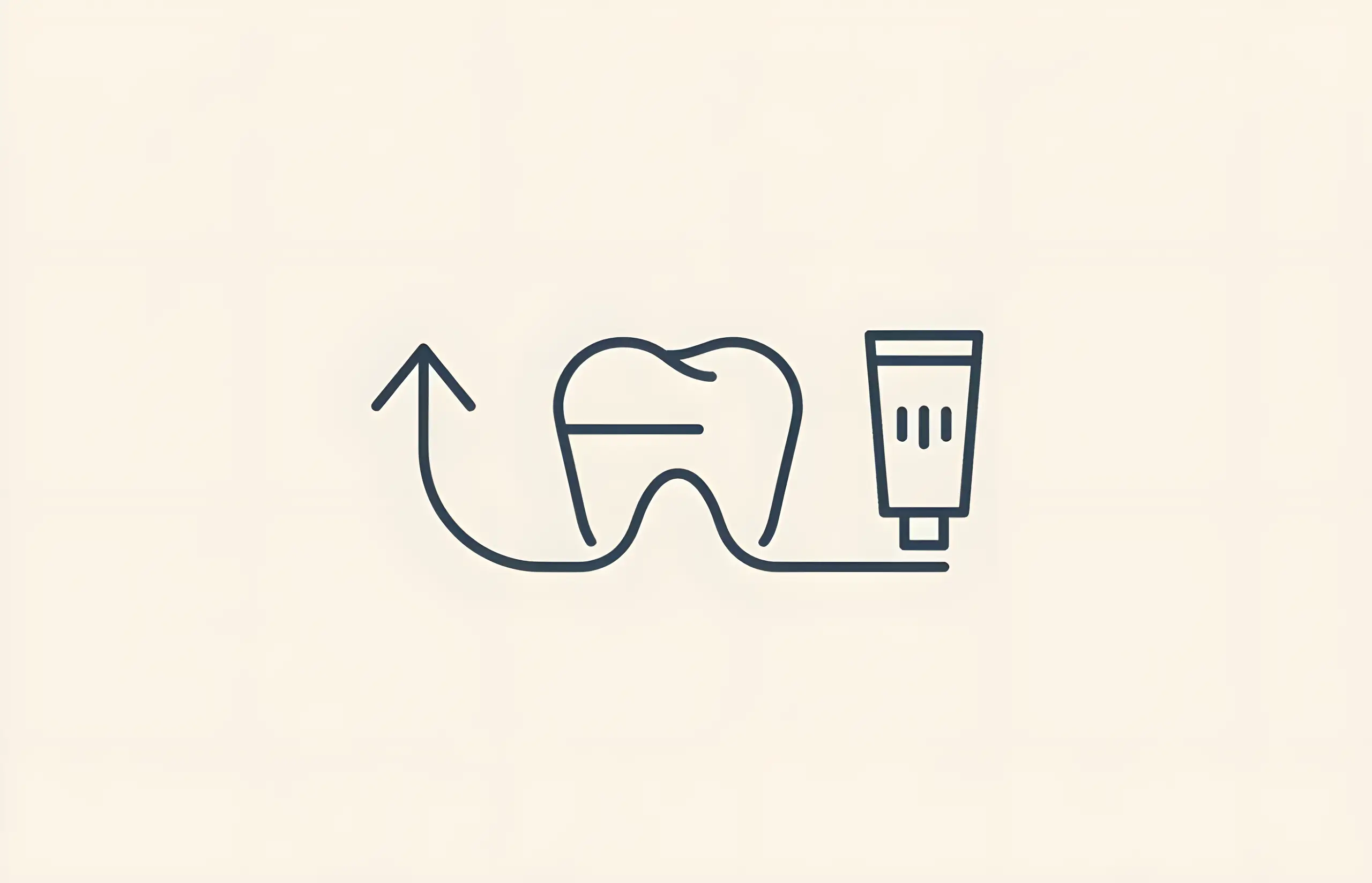
Choosing the Best Toothpaste for Veneers
Comprehensive guide to selecting toothpaste for veneers, understanding RDA values, avoiding abrasive ingredients, surface roughness concerns, and proper oral care techniques

Can Temporary Veneers Cause Pain?
Complete guide to temporary veneers including why they may cause discomfort, the procedure involved, preventive measures, and what to eat while wearing them

Can You Whiten Veneers?
Comprehensive guide to veneer whitening, why porcelain veneers resist bleaching, stain removal options, color matching strategies, and maintenance tips

A Guide to Composite Resin Veneers
Comprehensive information about composite resin veneers, including their uses, procedure, longevity, and how they compare to porcelain veneers

Should You Get Crowns or Veneers?
Comprehensive guide to choosing between dental crowns and veneers, including clinical indications, contraindications, insurance coverage, and decision criteria for optimal treatment outcomes

How Much Do Dental Veneers Cost in the UK?
Comprehensive guide to dental veneers including history, materials (composite, porcelain, lithium disilicate), treatment process, costs (£200-£1000 per tooth), longevity, care instructions, and cost factors

Eating With Veneers
Complete guide to dietary considerations with veneers including foods to avoid, staining resistance (coffee most problematic), fracture risk, care tips, and maintaining your investment
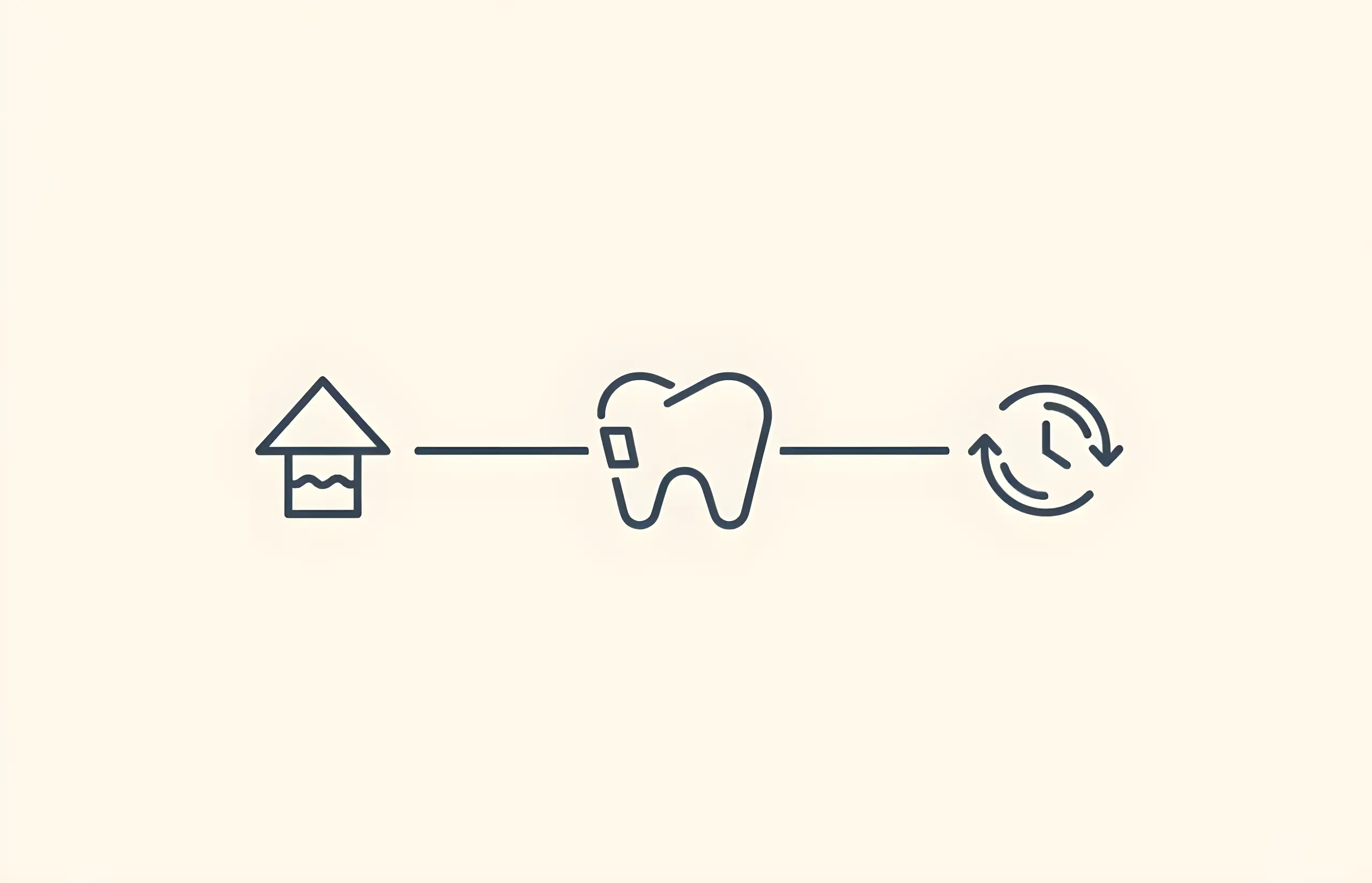
How Long Does It Take To Get Dental Veneers Fitted?
Complete Timeline Guide (3-4 Weeks Total, 94.4% Survival at 5 Years, 93.5% at 10 Years)
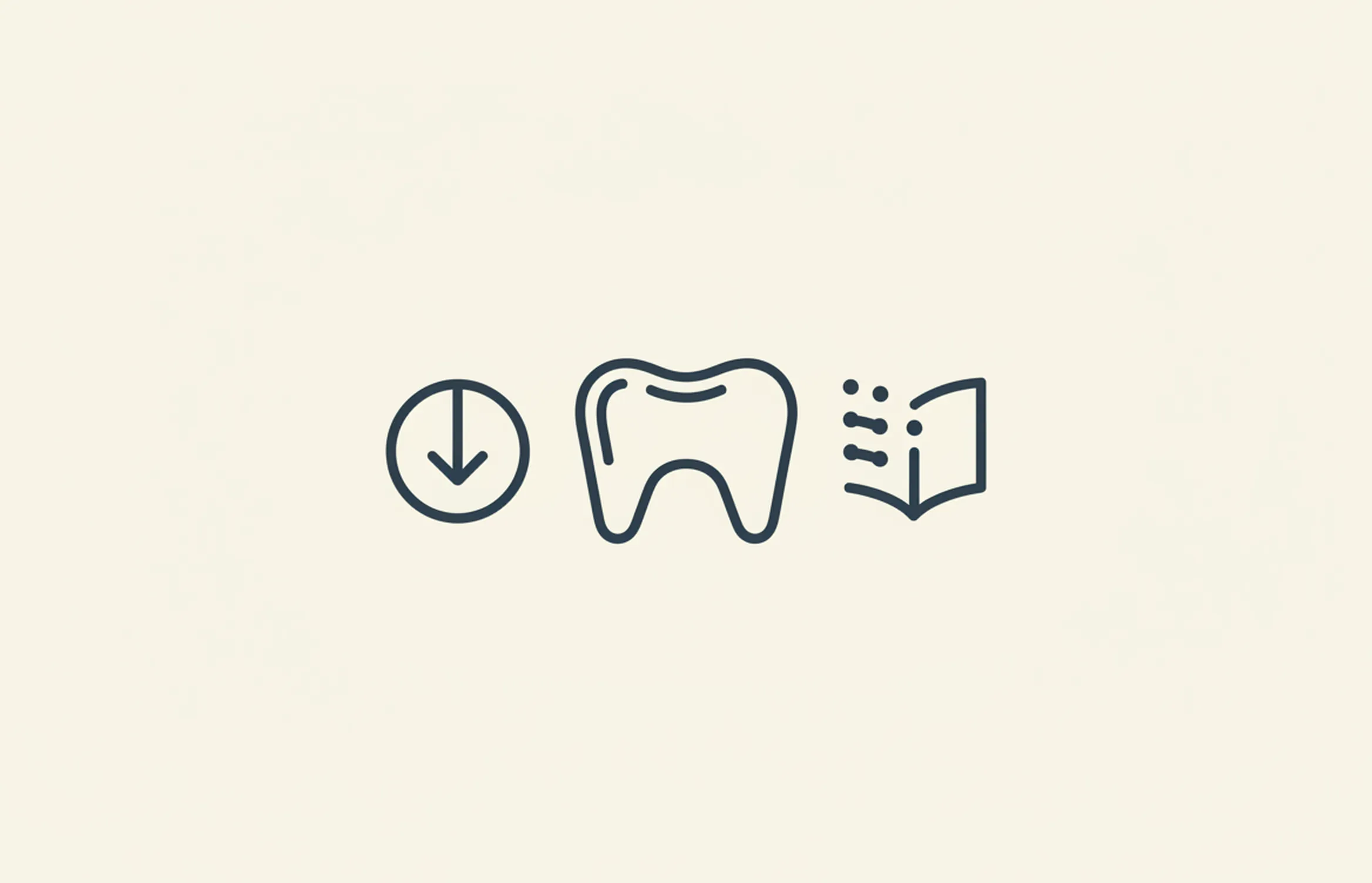
Instant Veneers – Costs and Information
Complete guide to instant veneers including prefabricated composite veneers, how they work, costs, and comparison with traditional porcelain veneers

Lumineers vs Porcelain Veneers
Comprehensive comparison of Lumineers and traditional porcelain veneers, including differences, costs, longevity, and which option is best for your smile
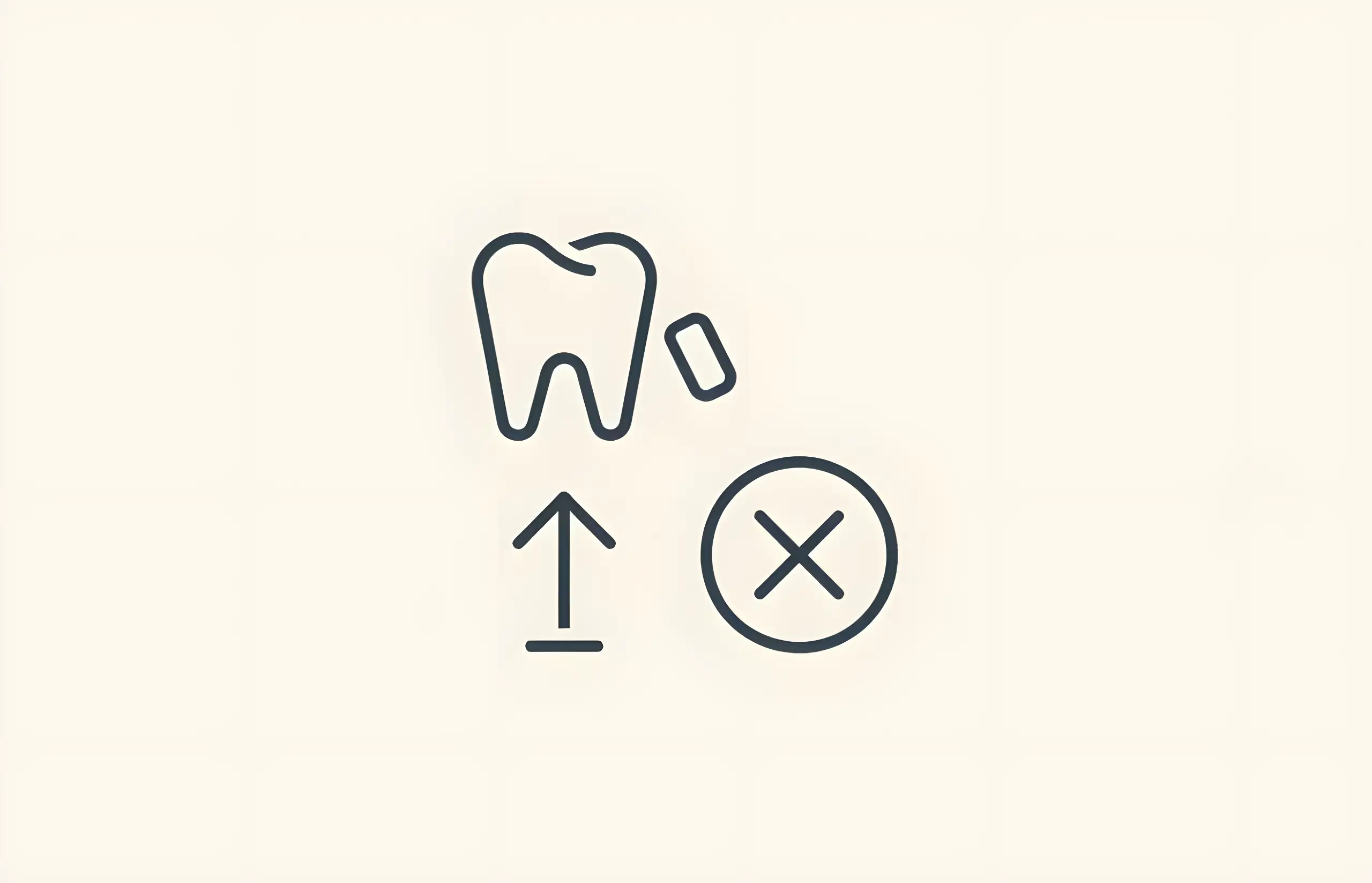
What To Do If Your Temporary Veneers Are Falling Off
Essential guide to protecting temporary veneers: what they are, foods to avoid, and when to see a dentist if they become loose or fall off

Different Types of Veneers
Comprehensive guide to veneer types including porcelain, composite, instant, and removable veneers with survival rates, costs, pros and cons, and how to choose the right option
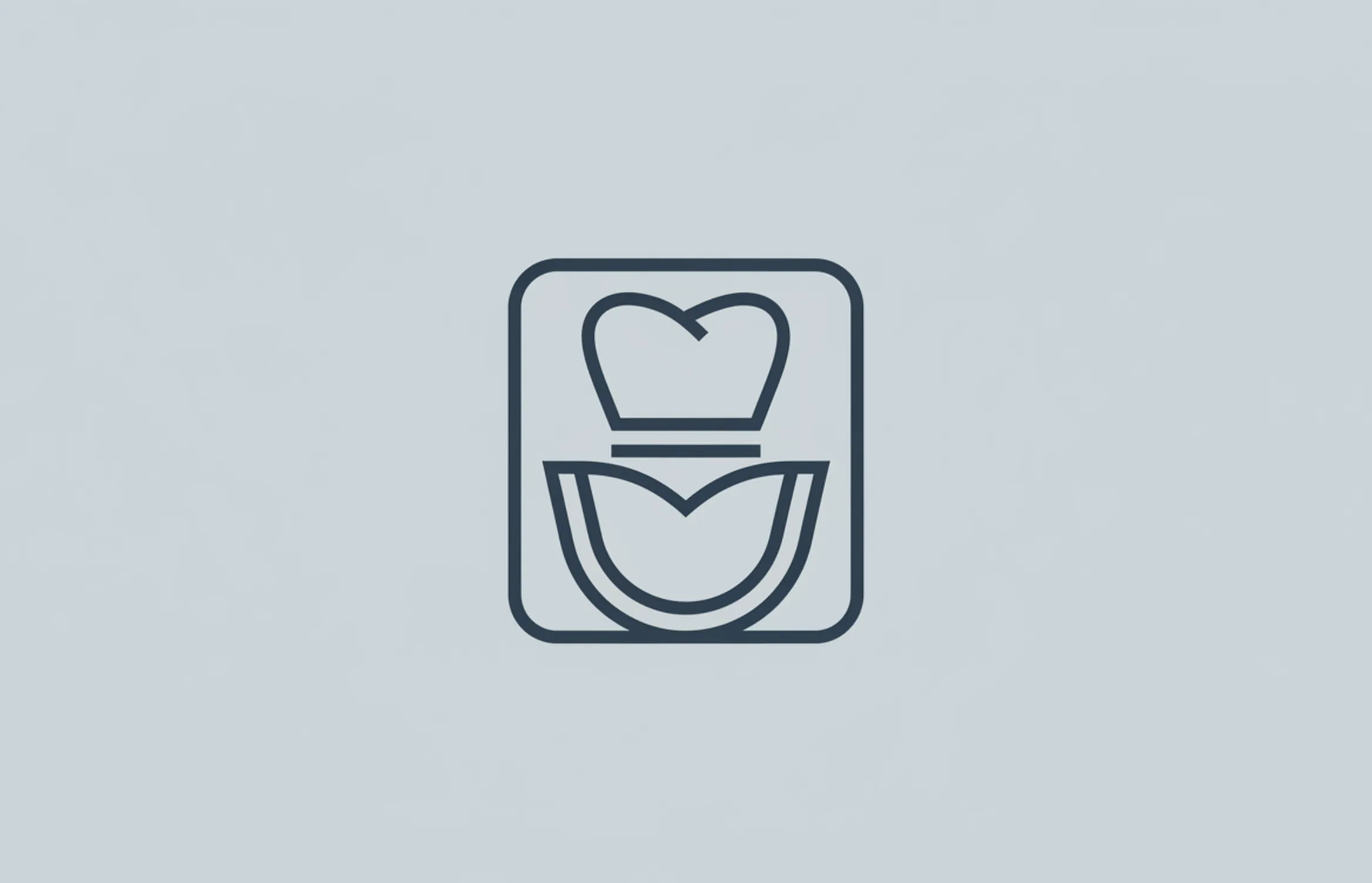
Can You Put Veneers Over Crowns?
Comprehensive guide to placing veneers over crowns, why it's generally not recommended, bonding challenges, crown survival rates, and alternative treatment options
About The Dental Guide
The Dental Guide is a trusted online resource providing evidence-based information about dental health, treatments, and procedures. Our content is created and reviewed by qualified dental professionals to help you make informed decisions about your oral health.
Our Mission
- Evidence-based dental information
- Expert-reviewed content
- Clear, accessible explanations
- Latest treatment options
- Patient-focused guidance
Editorial Standards
- GDC-registered dental professionals
- Peer-reviewed sources
- Regular content updates
- Medical accuracy verification
- Transparent authorship
Important Notice
The information on The Dental Guide is for educational purposes only and should not replace professional dental advice. Always consult with a qualified dentist for diagnosis and treatment recommendations tailored to your individual needs and circumstances.
Medically Reviewed
Reviewed by Dr. Nasim Mechoui , BDS (Bristol)
Share this article
Comments & Discussion
Have questions about dental implants? Share your thoughts or experiences.
